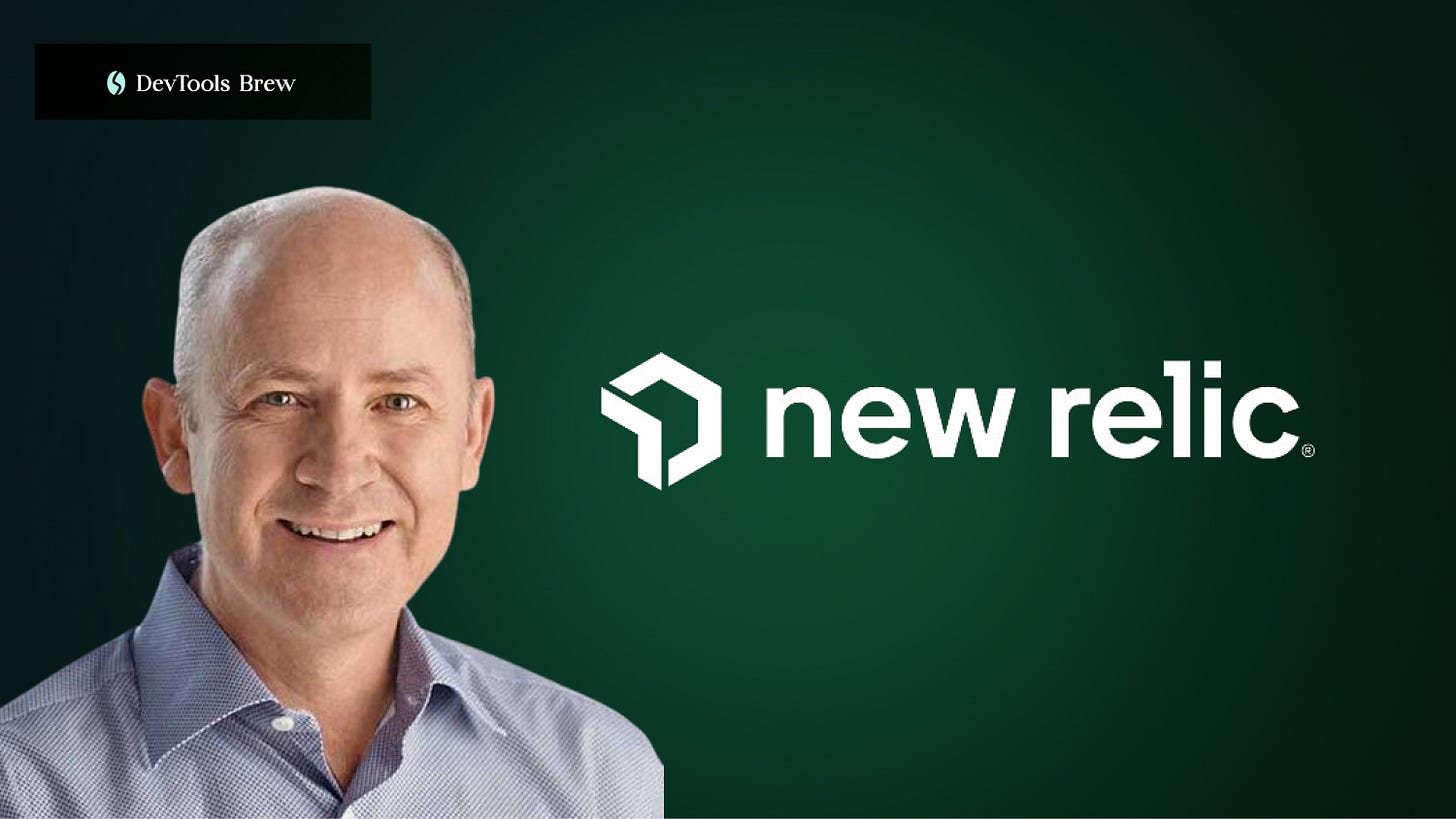DevTools Brew #60: Scaling New Relic: Lessons from CEO, Lew Cirne - Hiring & Managing Cracked engineers (PostHog)...
Hey folks, welcome to DevTools Brew Newsletter #60!
If you're new here, my name is Morgan Perry, co-founder of Qovery.
Every Saturday, I share the stories, strategies, and insights behind the most successful devtool companies. Subscribe to receive weekly stories :)
Also, follow me on Linkedin if you don’t already!
In this Issue #60:
📈 Scaling New Relic: Lessons from its CEO, Lew Cirne
📕 Hiring & Managing Cracked engineers (PostHog)
⭐ Star History Weekly Pick
Let's dive in!
📈 Scaling New Relic: Lessons from its CEO, Lew Cirne
Today, let’s spotlight New Relic’s CEO lessons about scaling a company. New Relic is becoming a leading player in the application performance management (APM) and observability market. Lew Cirne, New Relic CEO, stands out not just for his success, but for his unique approach to building and scaling companies. Just two years after the $375 million exit of his first venture, Lew embarked on a new journey with New Relic. As a repeat founder, he brings invaluable lessons learned from past experiences, pinpointing exactly what he's doing better this time around. Let's dive in👇
Key Takeaways:
Starting and Scaling Again
Learning from the Past: Lew emphasized the value of his prior experiences in shaping New Relic. Having previously founded and sold Wily Technology for $375M, he applied some lessons learned to avoid past mistakes and enhance his approach with New Relic.
Focused Funding: New Relic started with modest funding rounds, which Lew believes helped maintain a sharp focus on critical priorities and efficient growth, avoiding the pitfalls of being overcapitalized.
Product and Market Strategy
Simplifying User Experience: Inspired by the user-friendly design of the first iPhone, Lew prioritized a seamless 'unboxing experience' for New Relic, ensuring that the product impressed users within the first few minutes of interaction.
Early Market Penetration: Focusing initially on the Ruby on Rails community, New Relic quickly established credibility by engaging with key influencers and securing strategic partnerships, which provided immediate access to a significant user base.
Building and Evolving the Product
Customer-Centric Development: New Relic’s product evolution was heavily influenced by direct customer feedback and a deep understanding of user needs, which guided their expansion from a single product to a more comprehensive platform.
Balancing Innovation and Demand: Lew highlighted the importance of aligning product development with both market demand and the company’s unique strengths, ensuring that each new product or feature distinctly addressed customer pain points while leveraging New Relic’s core competencies.
Competitive Strategy and Growth
Dealing with Competition: As New Relic grew, it faced increasing competition. Lew’s strategy involved less "Canadian niceness" and more proactive defense and assertion of their market position.
Sales and Customer Engagement: Integrating a Sales team was crucial for converting and expanding customer relationships, especially as the product offerings became more sophisticated and targeted at larger enterprises.
Leadership
The Role of a Founder: Lew continues to be deeply involved in both strategic vision and product innovation, maintaining a hands-on approach that helps align the company’s trajectory with his original vision.
Building a Strong Team: Recognizing the importance of delegating, Lew has built a leadership team that can operate independently, allowing him to focus on areas where he can add the most value, particularly around product innovation and strategic partnerships.
At New Relic, Lew leverages his previous experiences to enhance his strategic approach, focusing on sustainable growth and cultural adaptability. His journey from a coding CEO to a strategic leader highlights the nuanced balance of innovation, culture, and business acumen necessary to top a competitive industry.
📕 Hiring & Managing Cracked engineers (PostHog)
What does it mean to hire "cracked" engineers? These individuals aren't just talented; they are transformative, driving forward with innovation and passion. Charles Cook, from PostHog, shares his insights on identifying, hiring, and managing these rare gems. Let’s uncover the key takeaways👇
Identifying 'Cracked' Engineers:
Traits of Excellence: Cracked engineers exhibit extreme ownership of their ideas, pushing projects to completion with zeal and ensuring they are integral to driving innovation.
Attitude Matters: They maintain optimism, welcoming change and new ideas, which is crucial for adapting and thriving in dynamic environments.
Authentic Interaction: These individuals are authentic and straightforward, focusing on impactful work rather than office politics, making their contributions genuine and impactful.
2. Managing Cracked Engineers:
Lead by Example: Managers must mirror the behaviors they expect, engaging deeply with both mundane and complex tasks to inspire their team.
Fuel Enthusiasm Over Skill: Generating enthusiasm is more critical than merely imparting skills; cracked engineers motivated by passion will self-train and innovate.
Facilitate Autonomy: Allowing these engineers to own their projects and make key decisions fosters a sense of responsibility and alignment with the company’s goals.
3. Creating an Environment for Success:
Streamline Processes: Eliminate needless approval processes that stifle creativity and slow down innovation.
Focus on High Performers: Instead of spending disproportionate time elevating underperformers, focus on enhancing the output of your top performers to maximize impact.
Cultivate a Cracked Team: Ensure that your team members are all 'cracked' to maintain high motivation and prevent the dilution of work culture and output quality.
4. Cultural Fit and Non-traditional Backgrounds:
Inclusive Hiring Practices: PostHog values diverse experiences over traditional status markers like previous high-profile company employment, recognizing that talent can come from anywhere.
Reject Toxicity: Clear emphasis on teamwork and respect ensures that being exceptional does not come at the cost of collegiality or workplace harmony.
Hiring and managing cracked engineers is less about control and more about empowerment. At PostHog, the approach to integrating these individuals into the team underscores a broader philosophy that values creativity, ownership, and a profound connection to one’s work over conventional metrics of success.
—> This article was originally published by Charles Cook on the PostHog blog.
⭐ Star History Weekly Pick
The Star History Weekly Pick is:
Quary: “Open-source BI for engineers.”
⭐️ 2k stars reached
It’s already over! If you have any comments or feedback, you can reach out to me on LinkedIn or Twitter.
Thanks for reading,
Morgan






